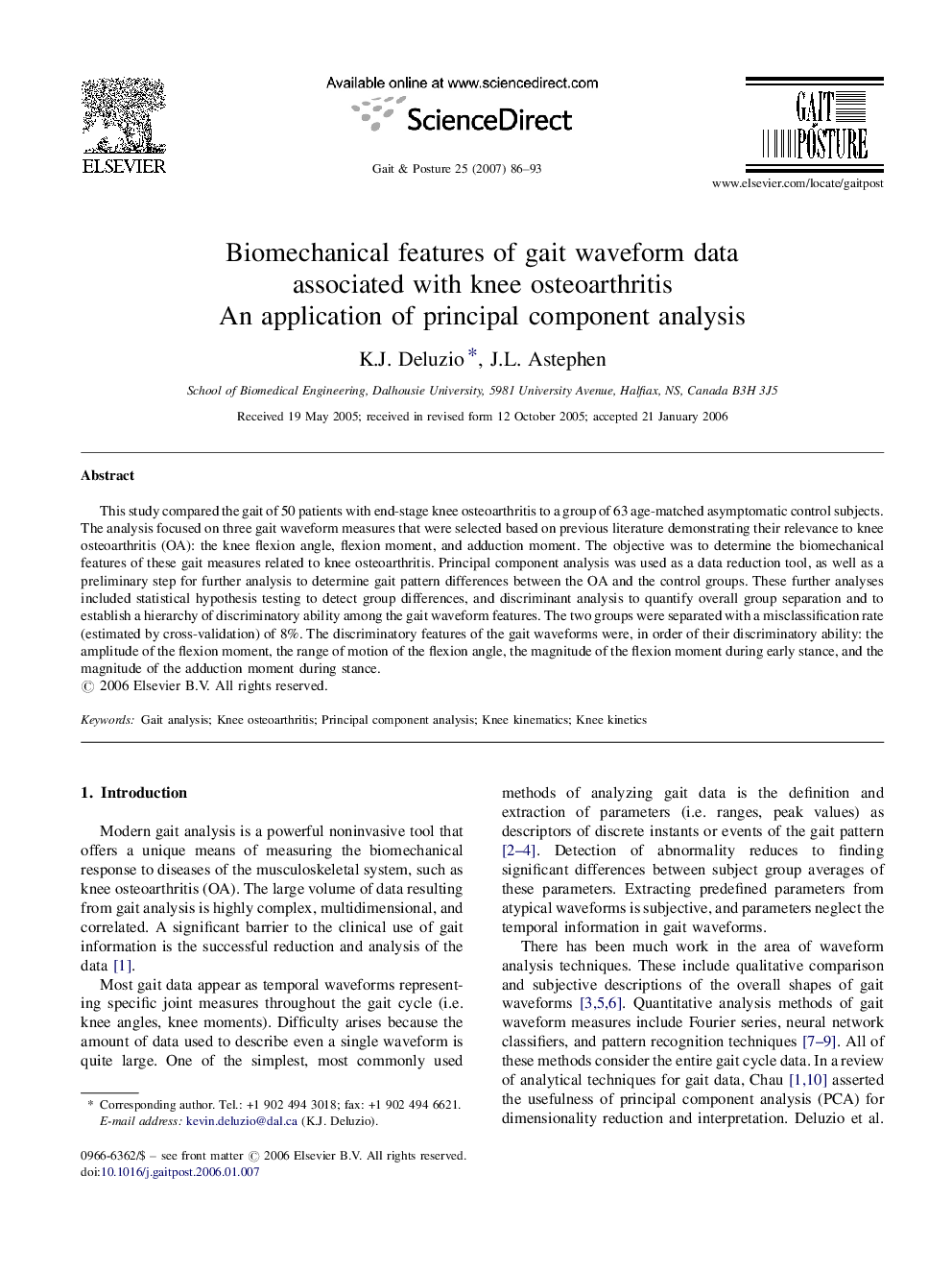| Article ID | Journal | Published Year | Pages | File Type |
|---|---|---|---|---|
| 4058543 | Gait & Posture | 2007 | 8 Pages |
This study compared the gait of 50 patients with end-stage knee osteoarthritis to a group of 63 age-matched asymptomatic control subjects. The analysis focused on three gait waveform measures that were selected based on previous literature demonstrating their relevance to knee osteoarthritis (OA): the knee flexion angle, flexion moment, and adduction moment. The objective was to determine the biomechanical features of these gait measures related to knee osteoarthritis. Principal component analysis was used as a data reduction tool, as well as a preliminary step for further analysis to determine gait pattern differences between the OA and the control groups. These further analyses included statistical hypothesis testing to detect group differences, and discriminant analysis to quantify overall group separation and to establish a hierarchy of discriminatory ability among the gait waveform features. The two groups were separated with a misclassification rate (estimated by cross-validation) of 8%. The discriminatory features of the gait waveforms were, in order of their discriminatory ability: the amplitude of the flexion moment, the range of motion of the flexion angle, the magnitude of the flexion moment during early stance, and the magnitude of the adduction moment during stance.
